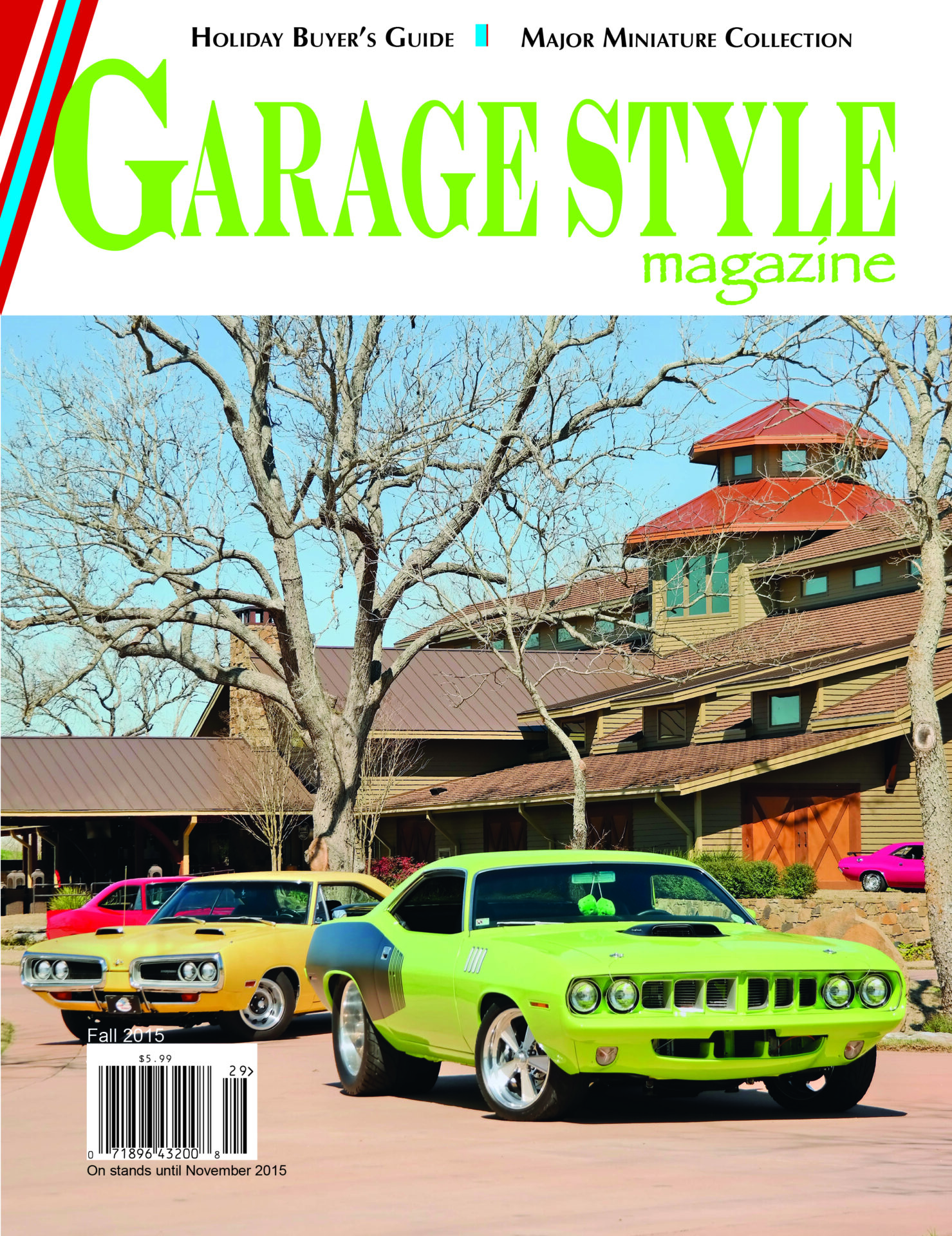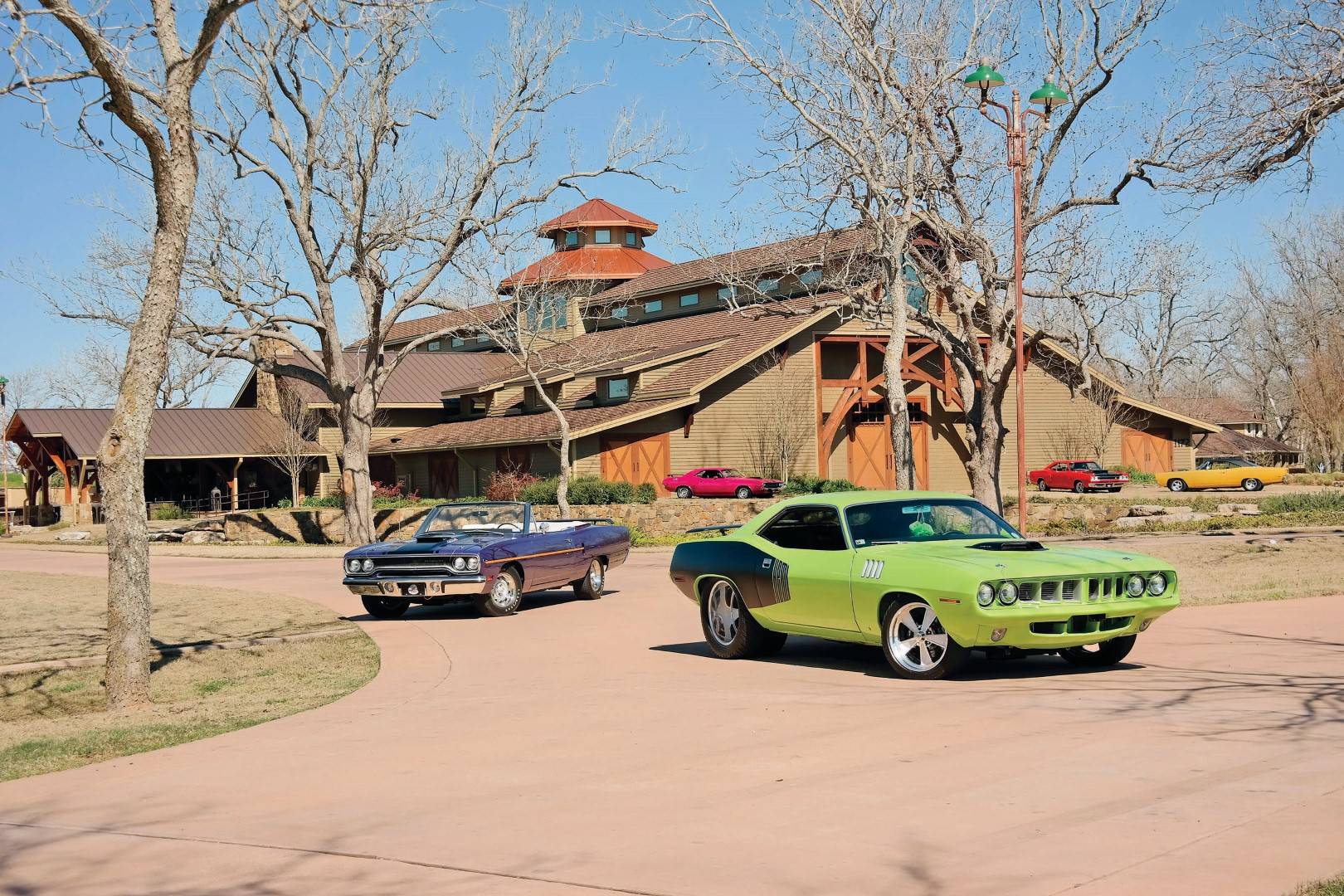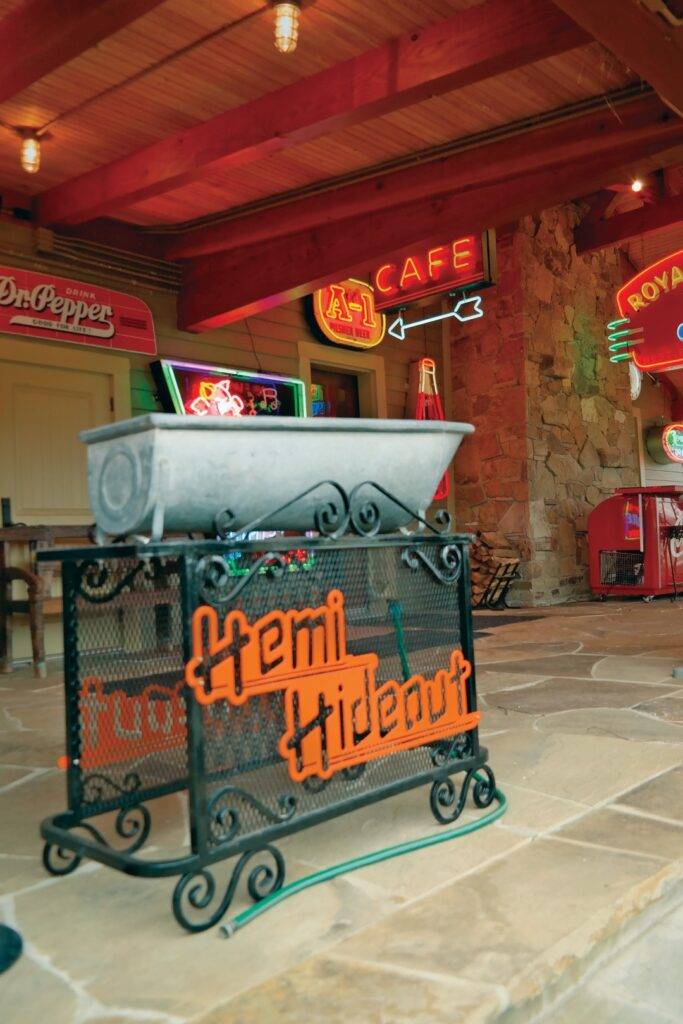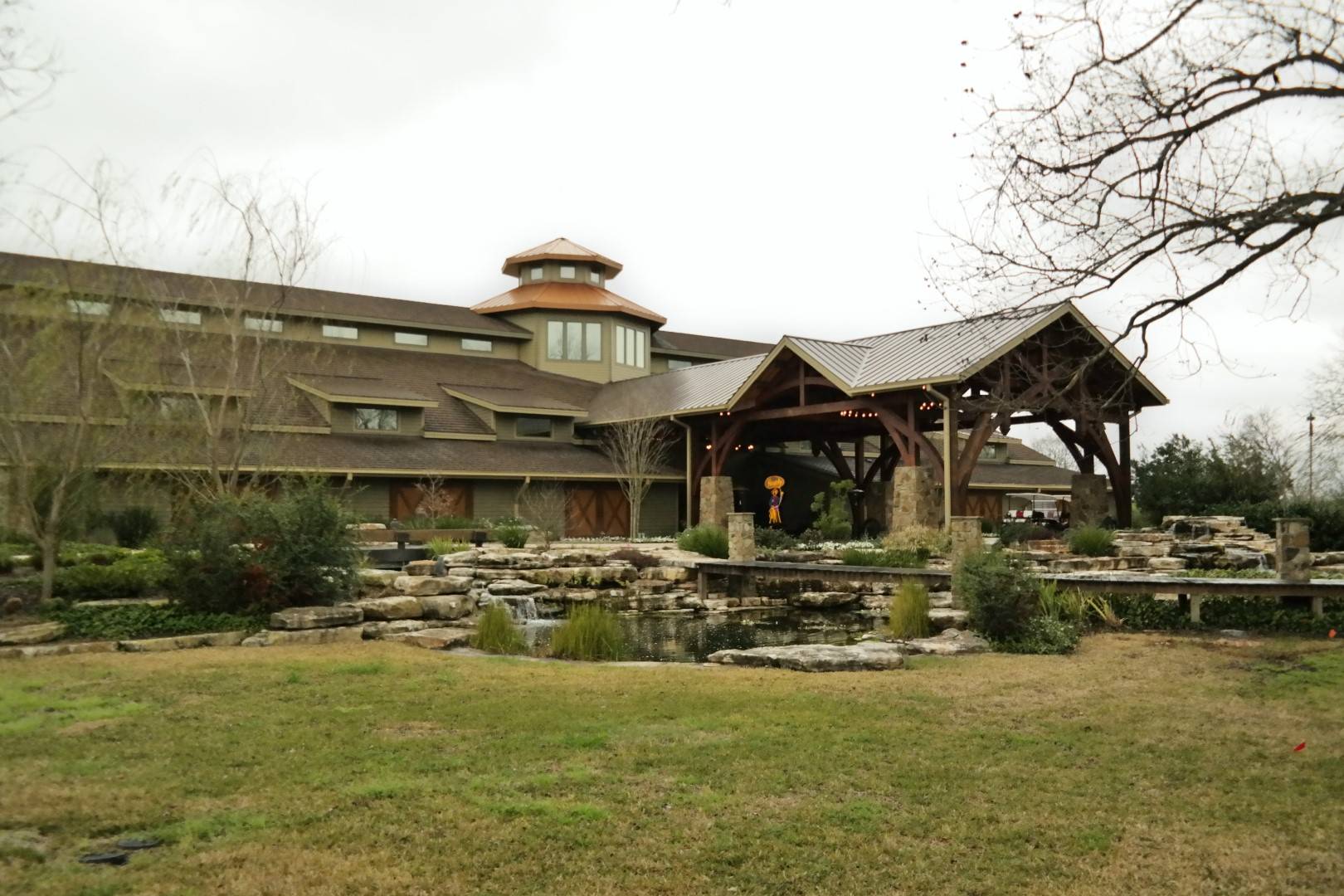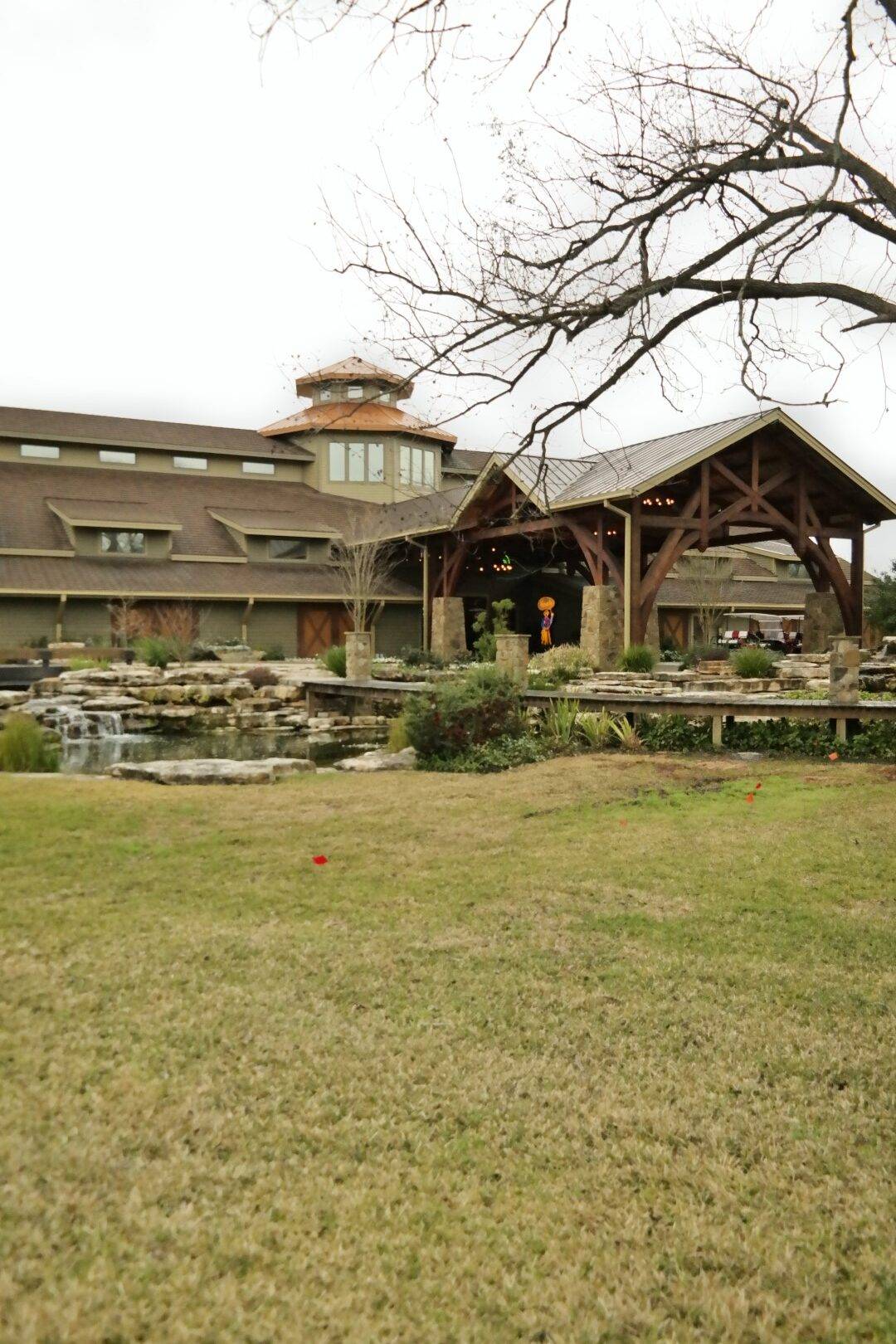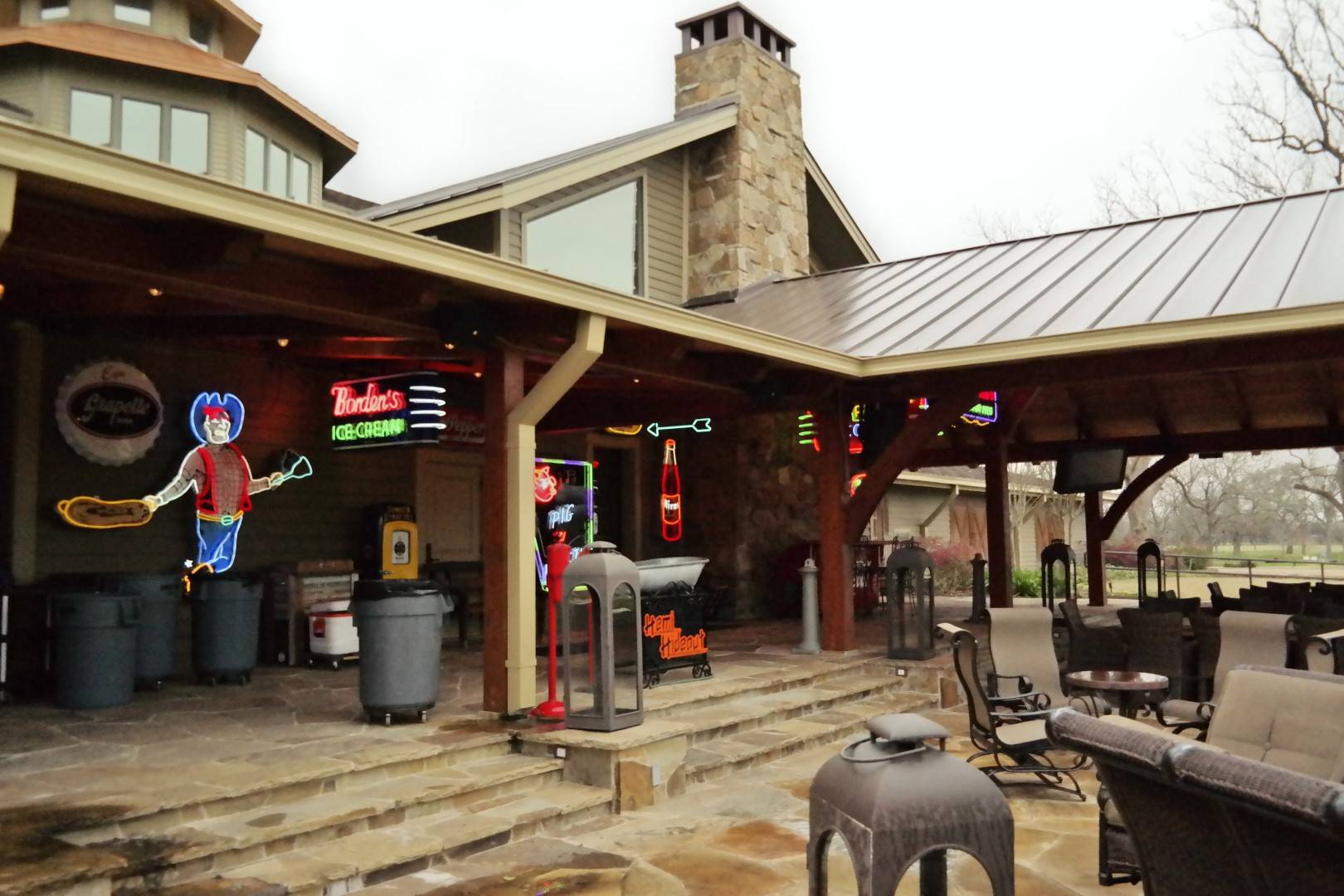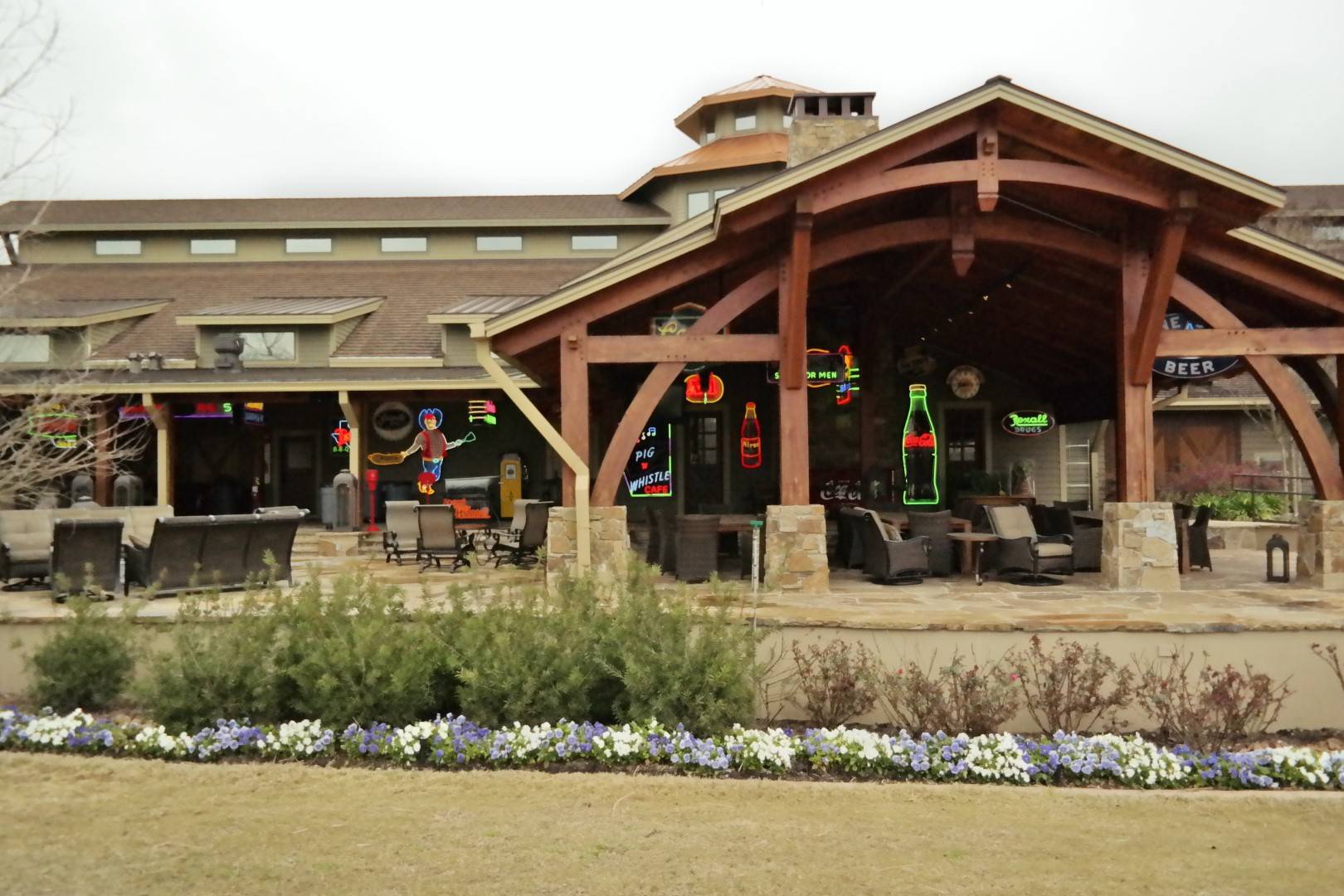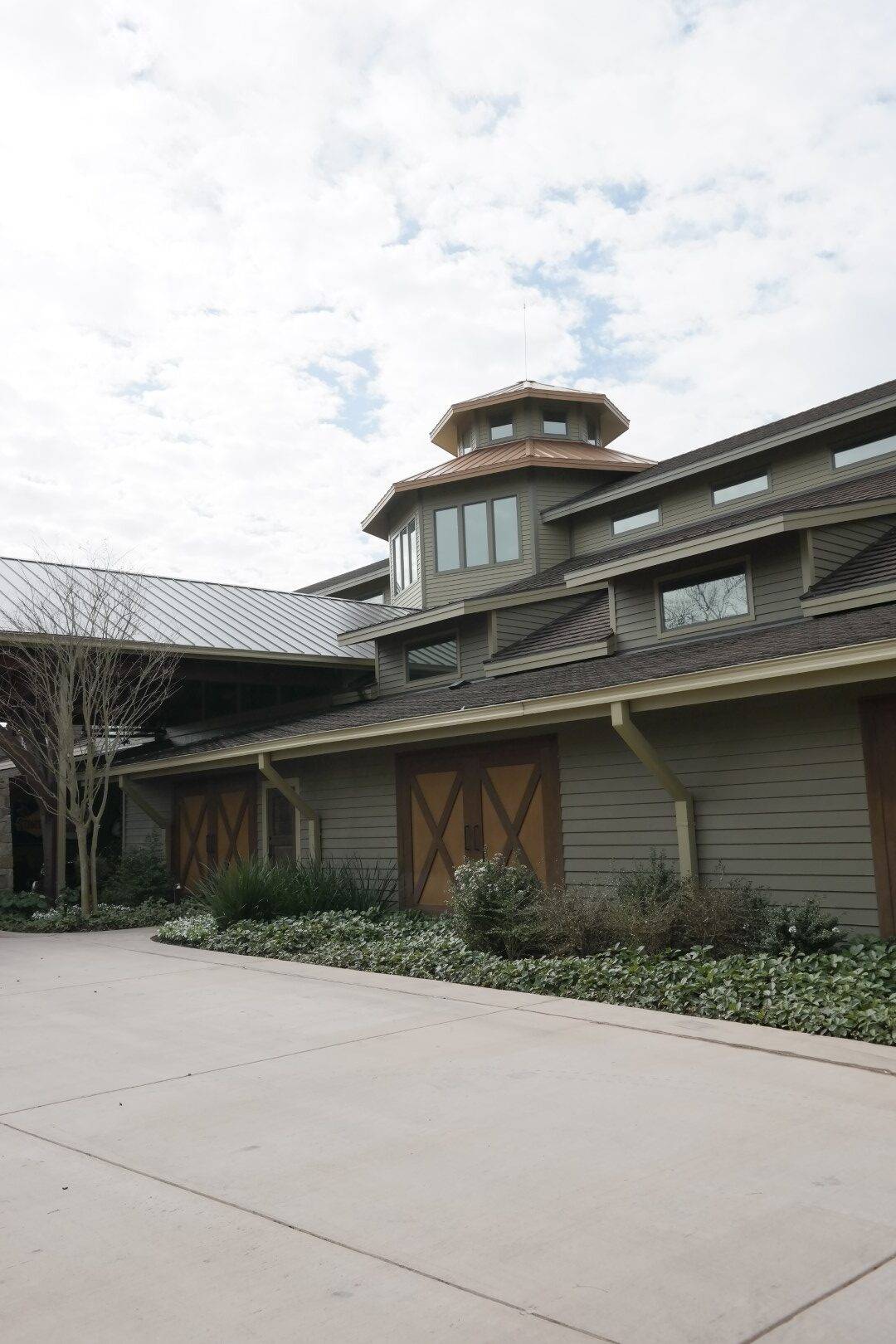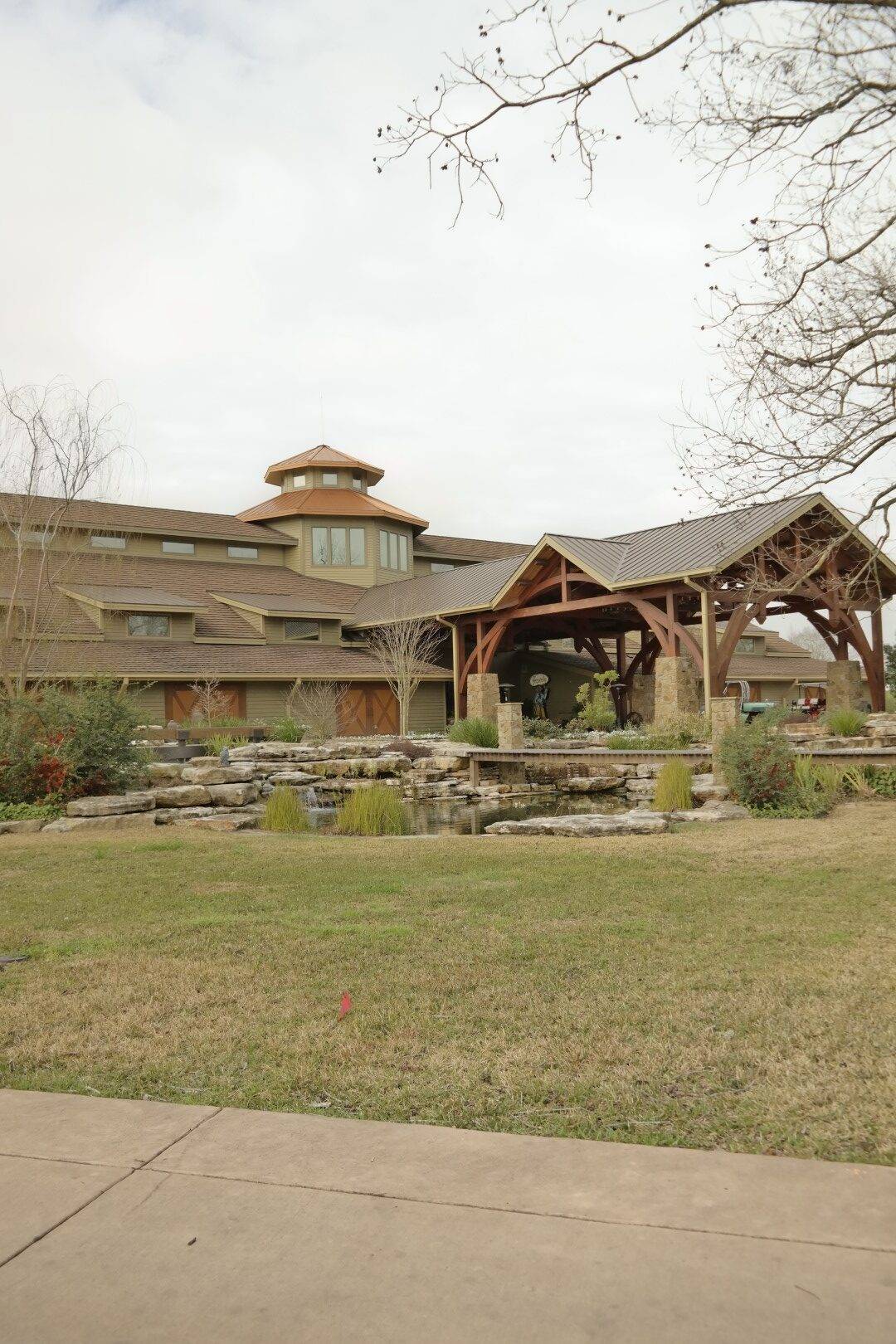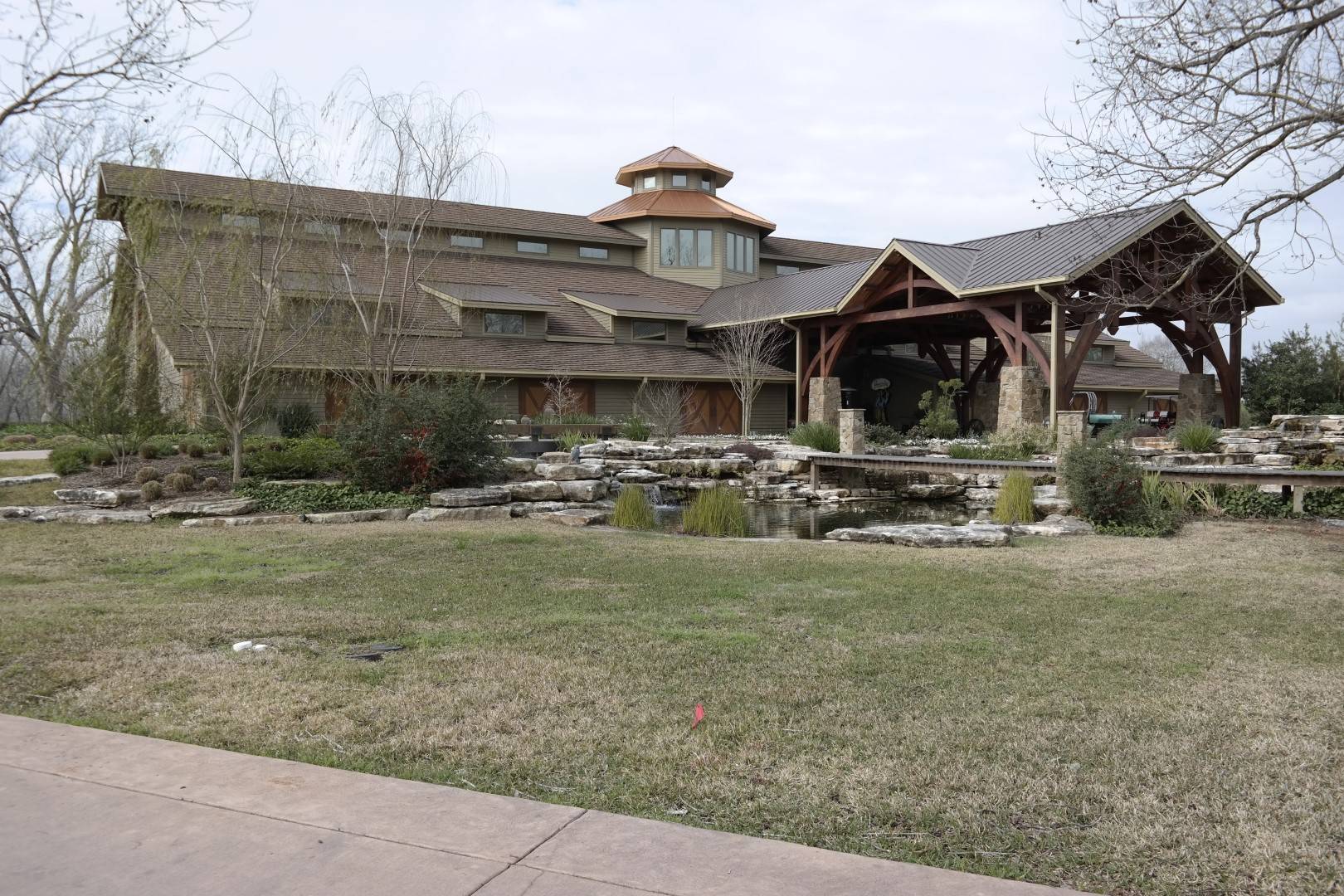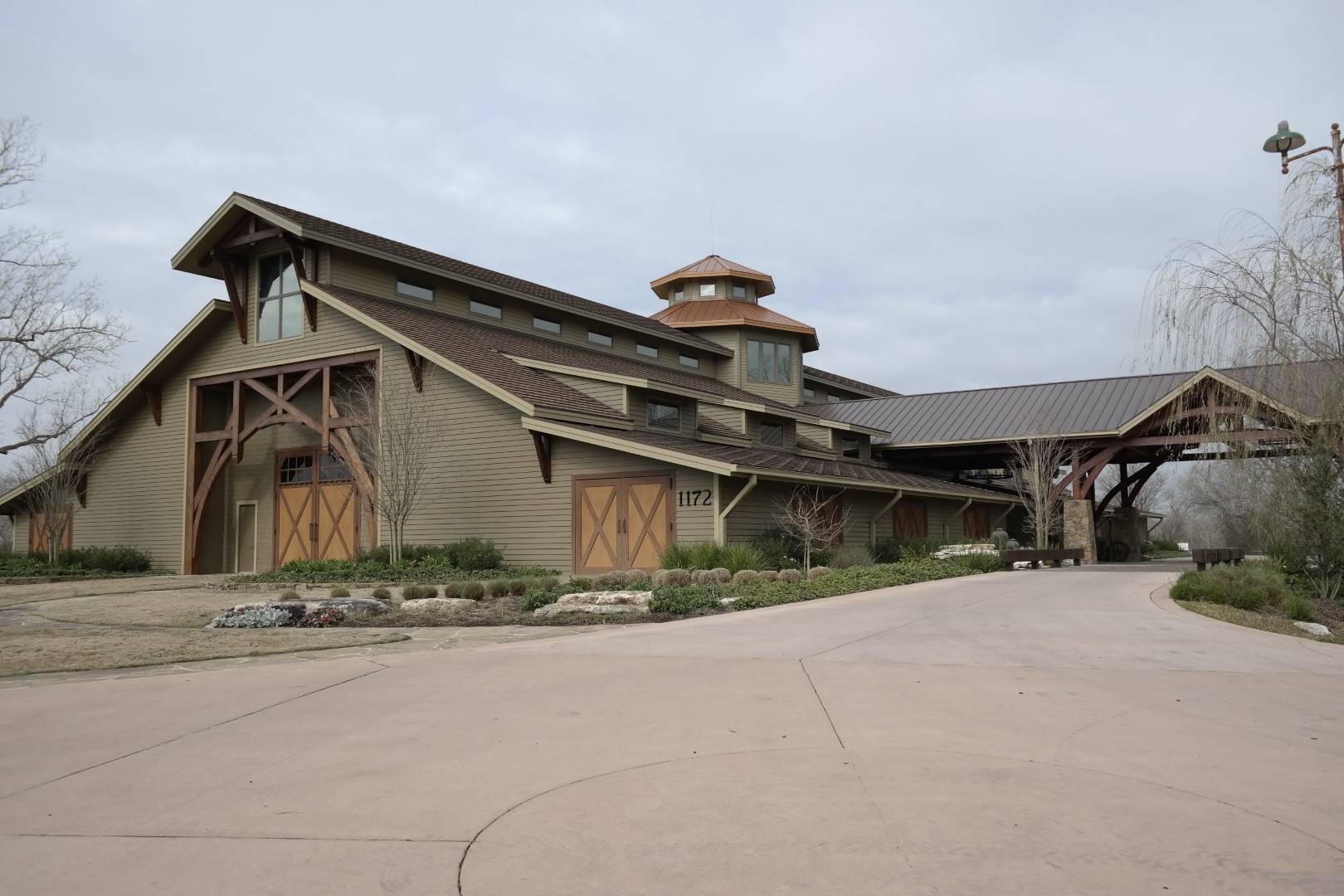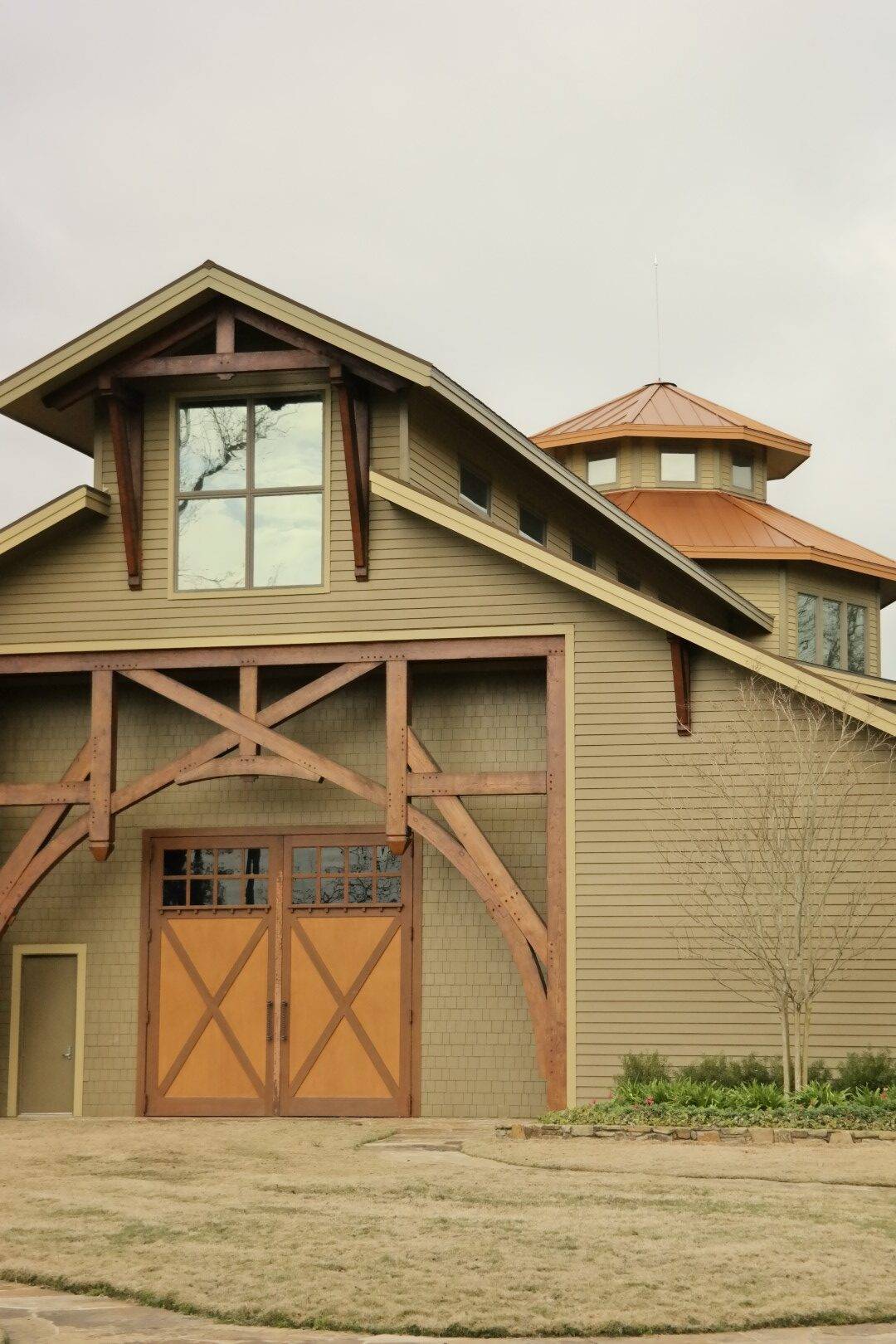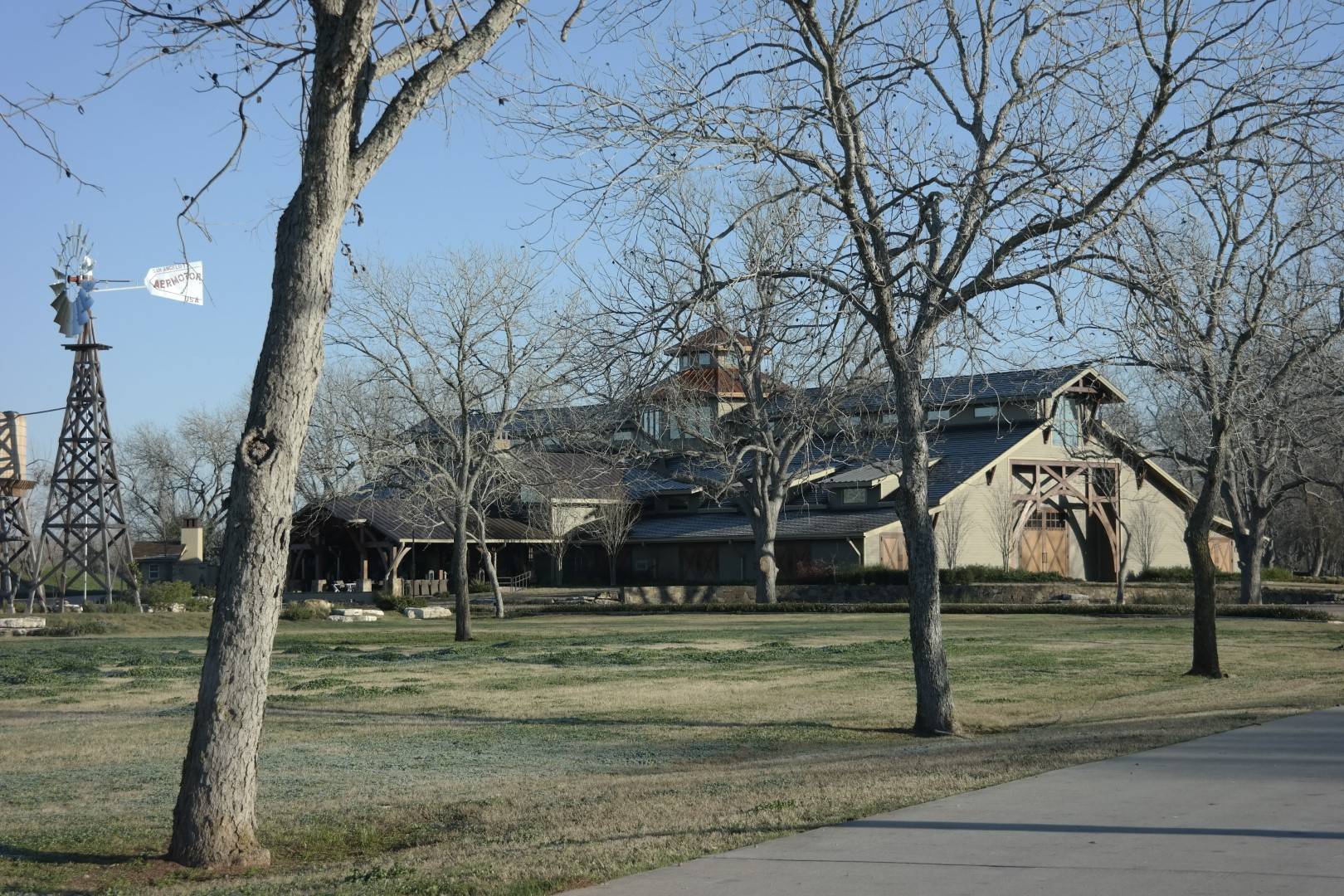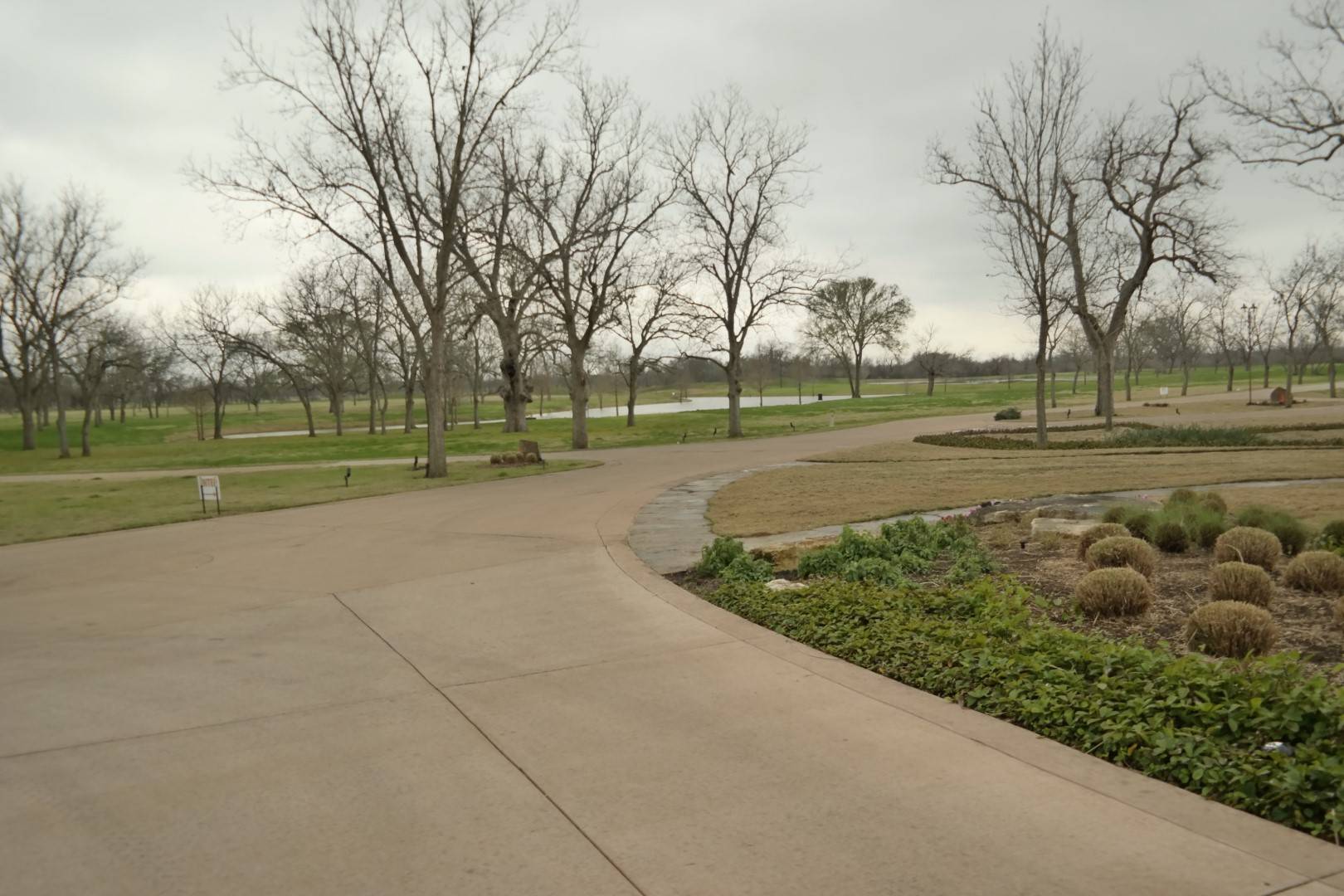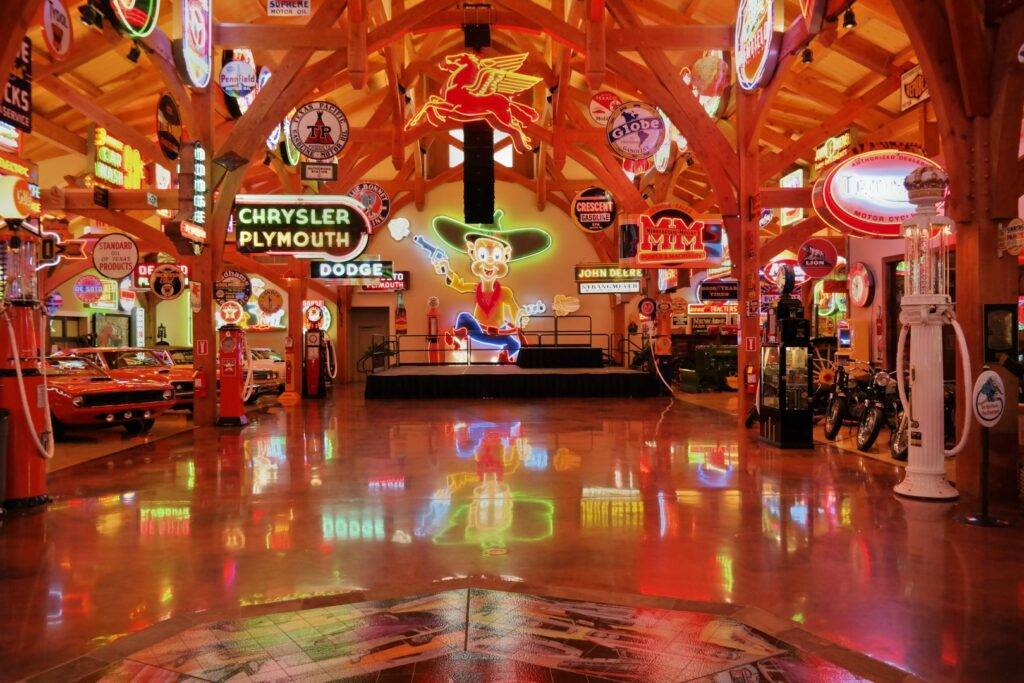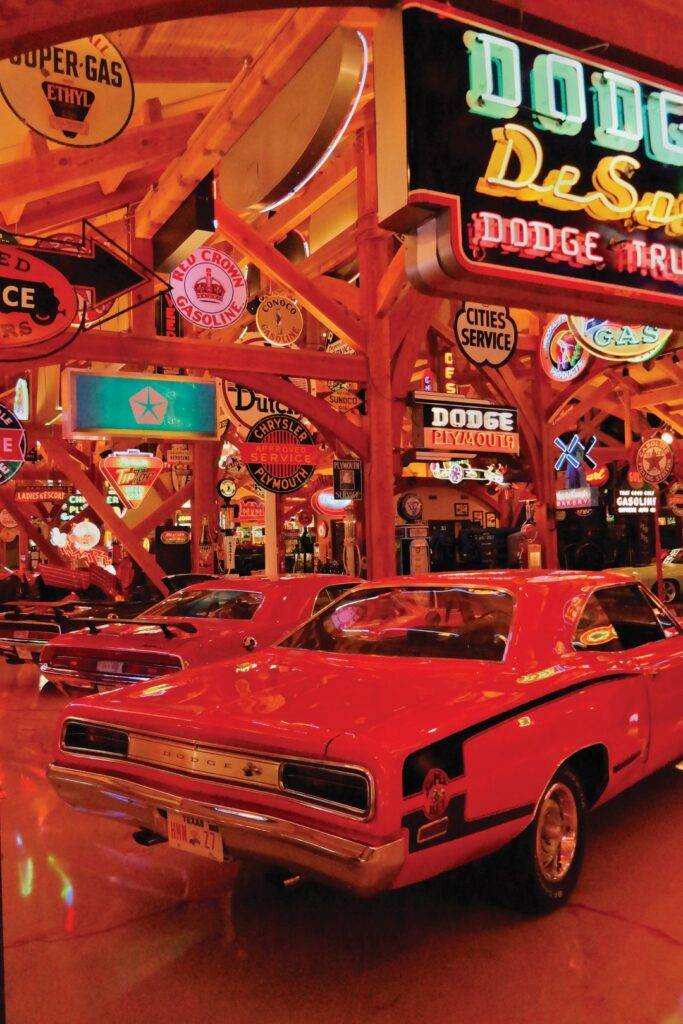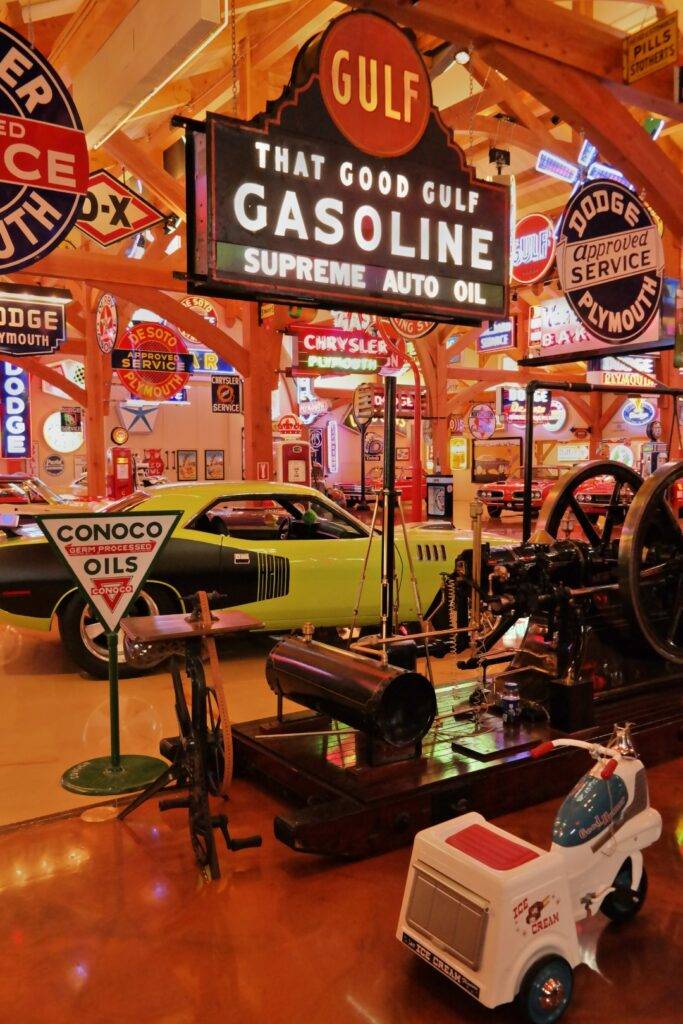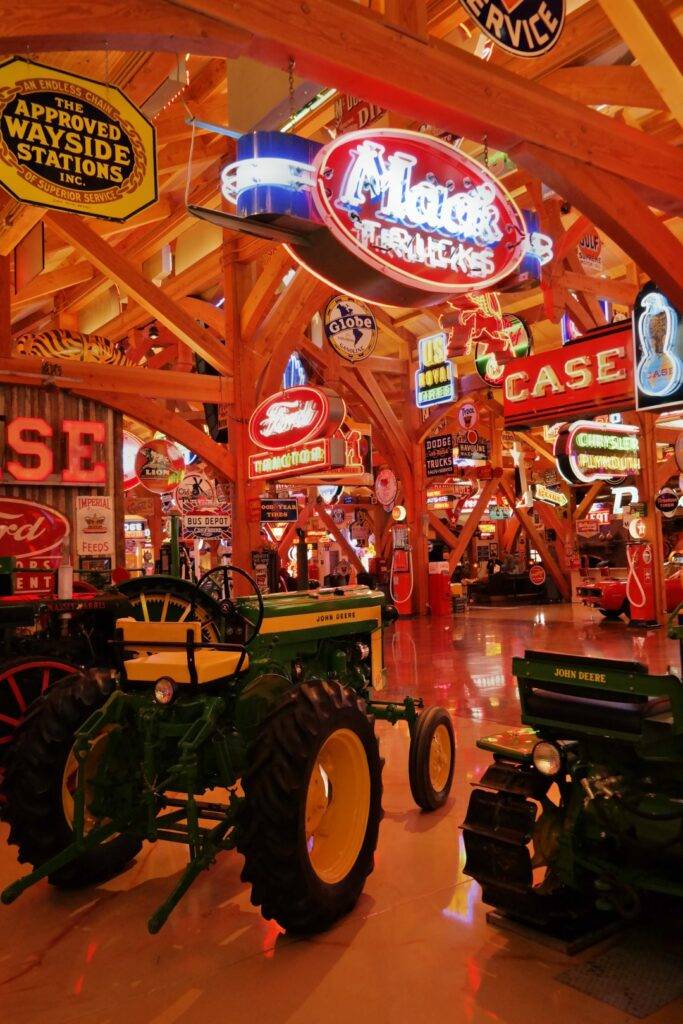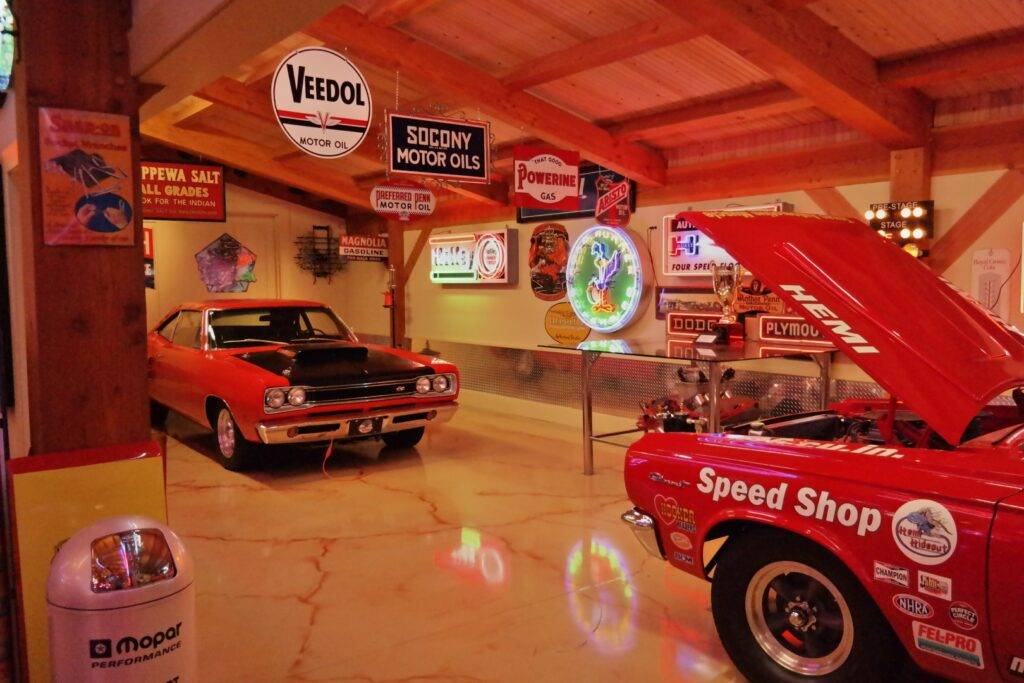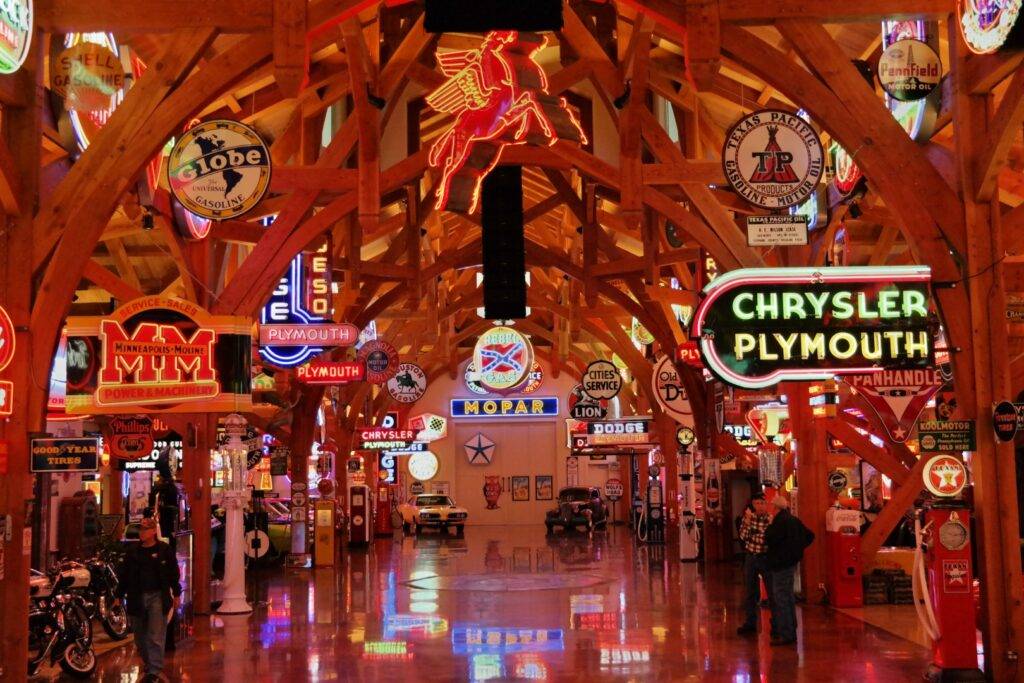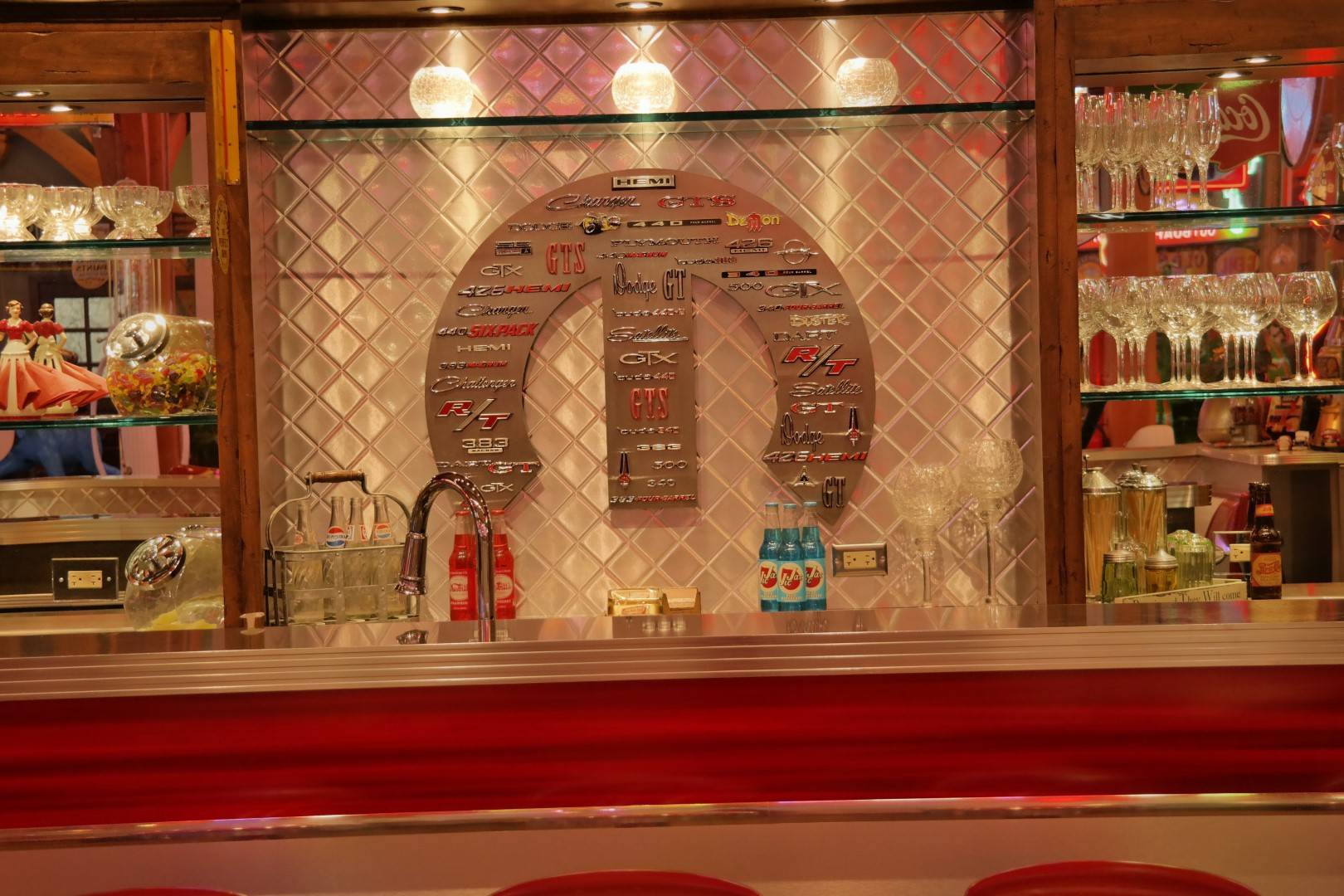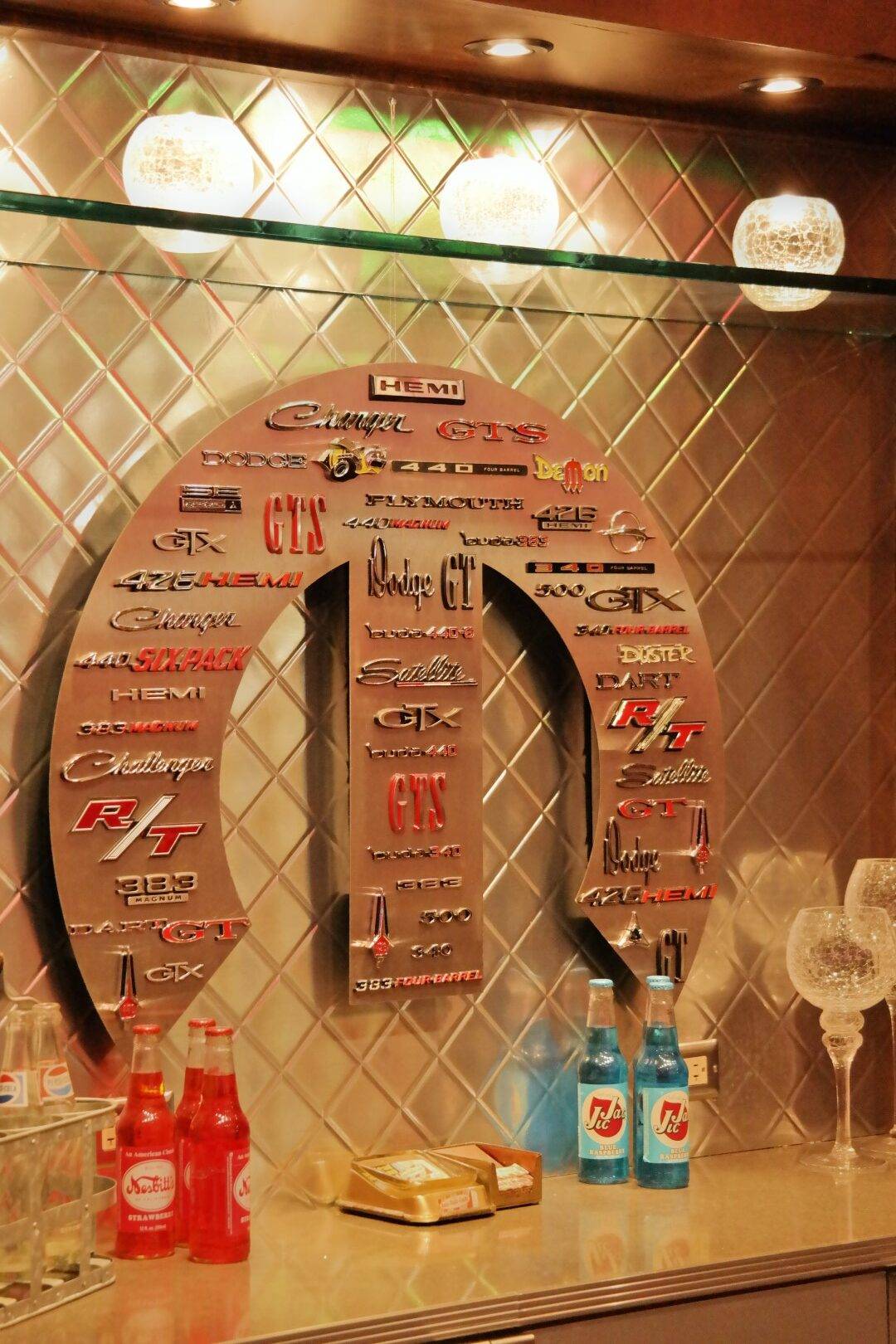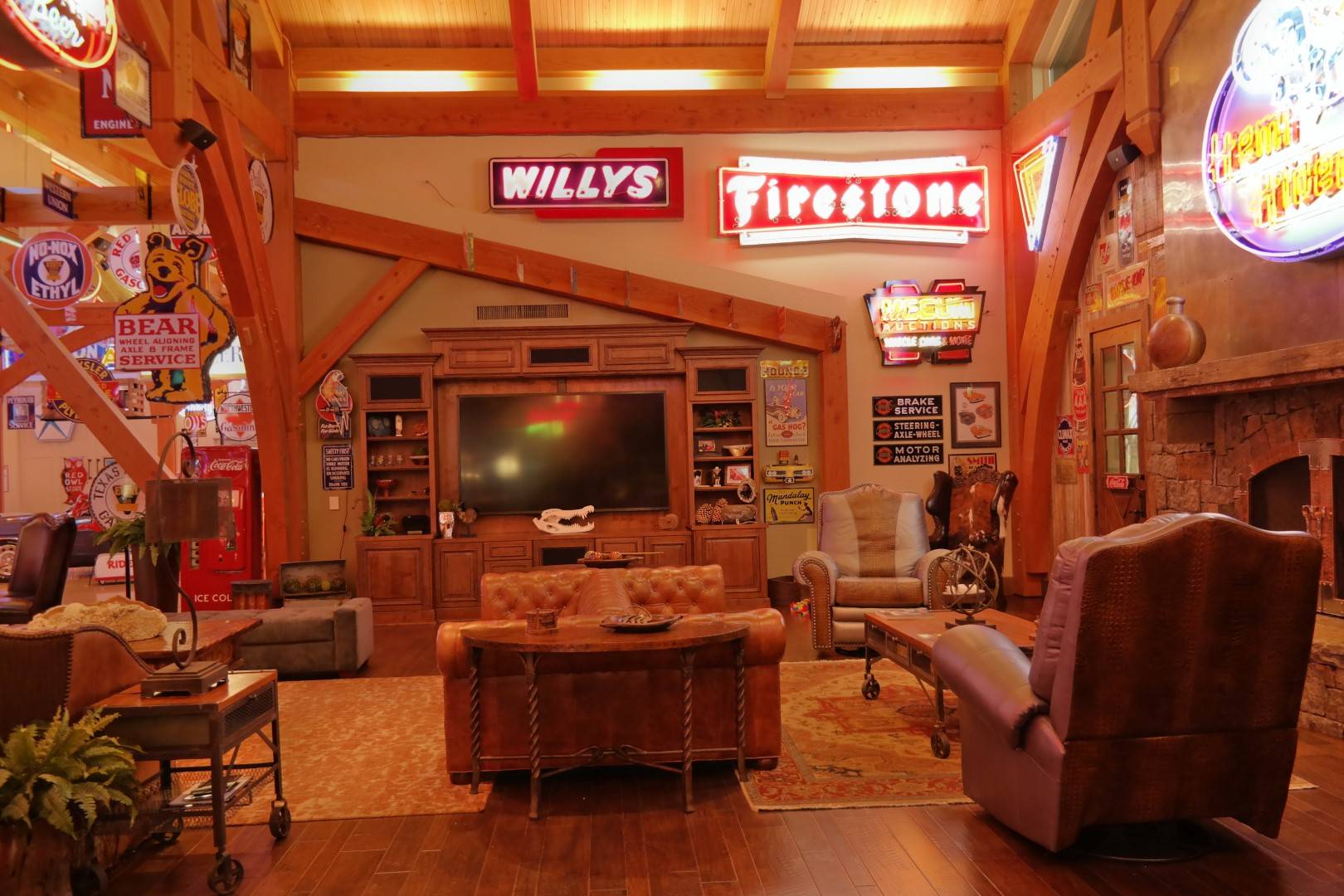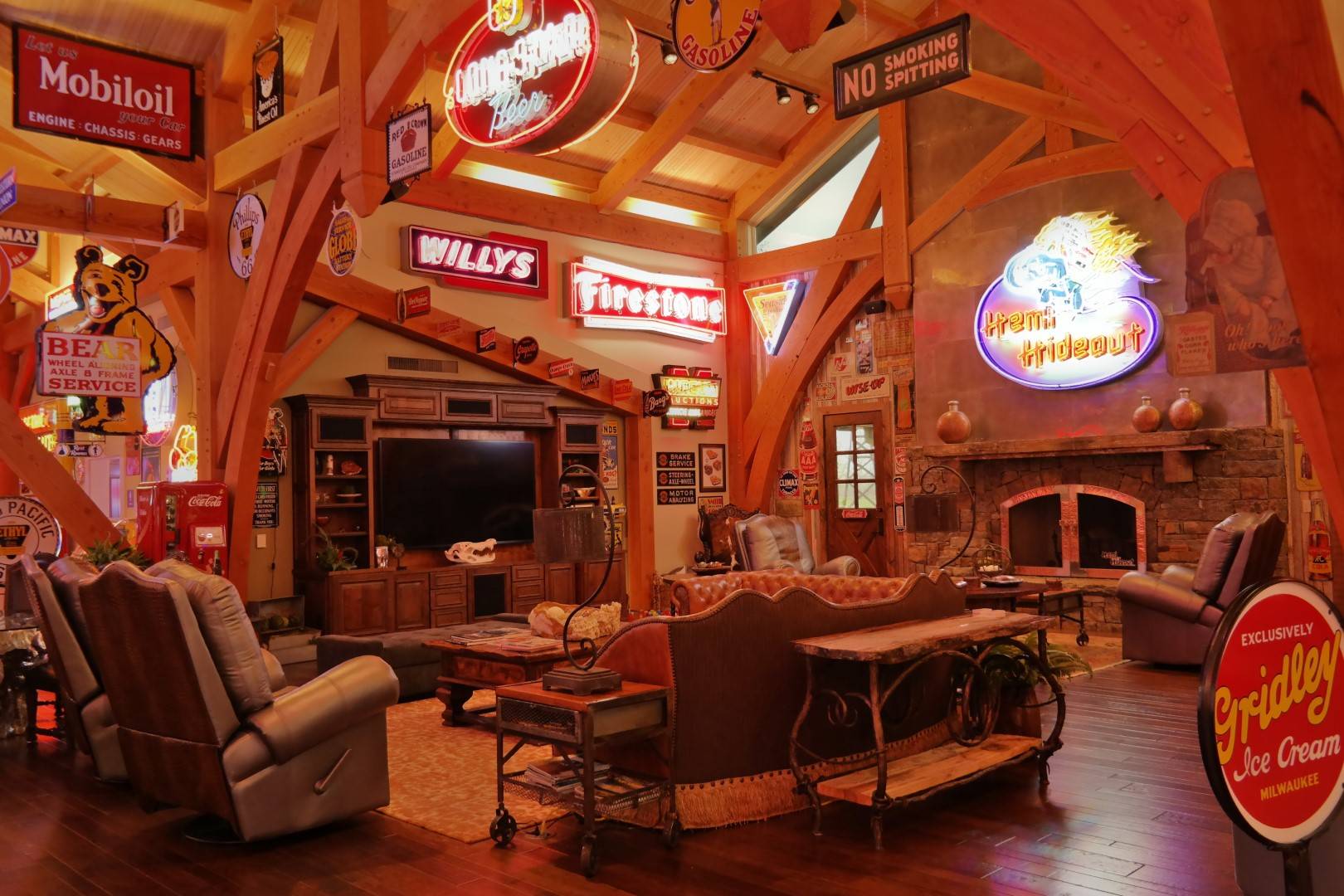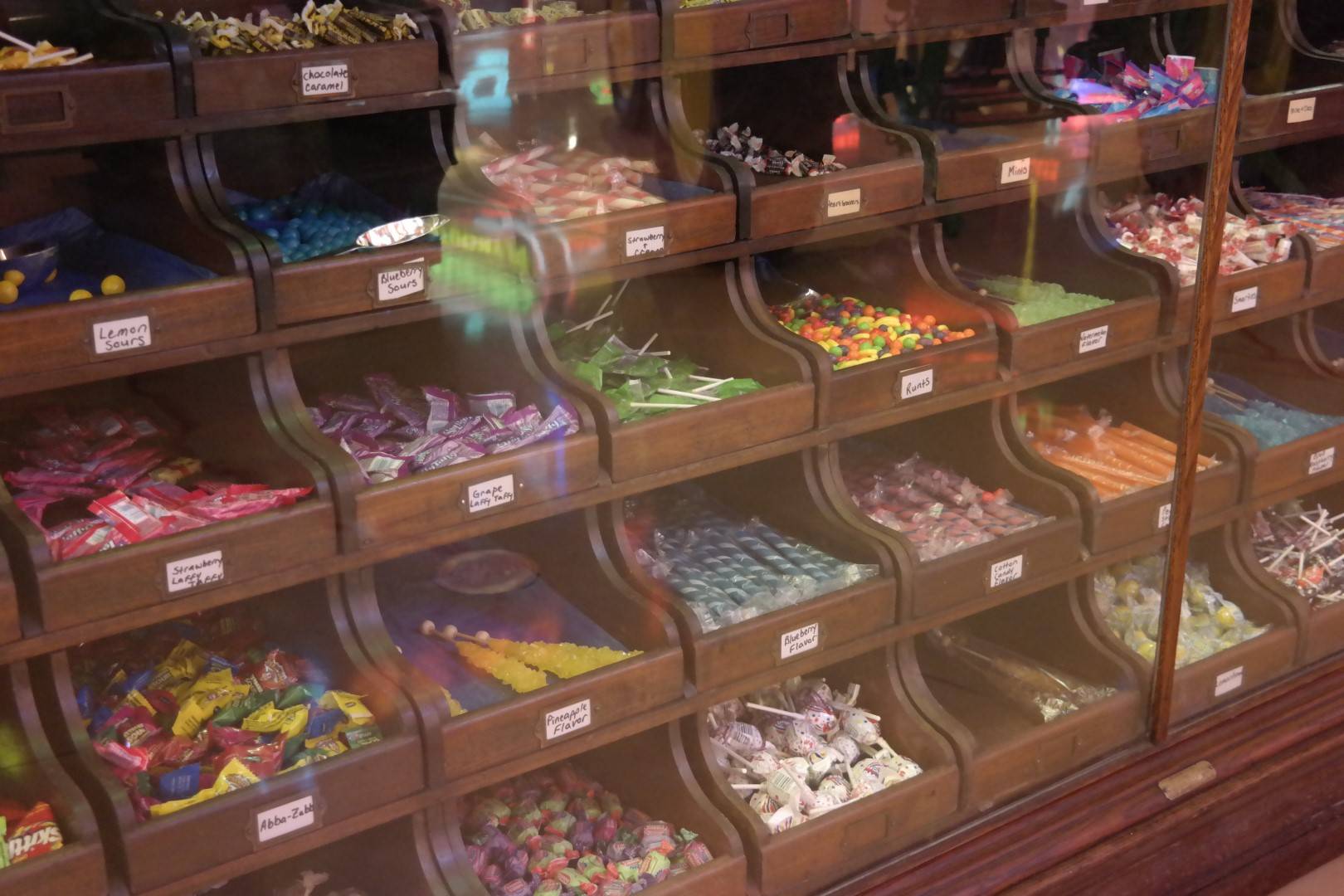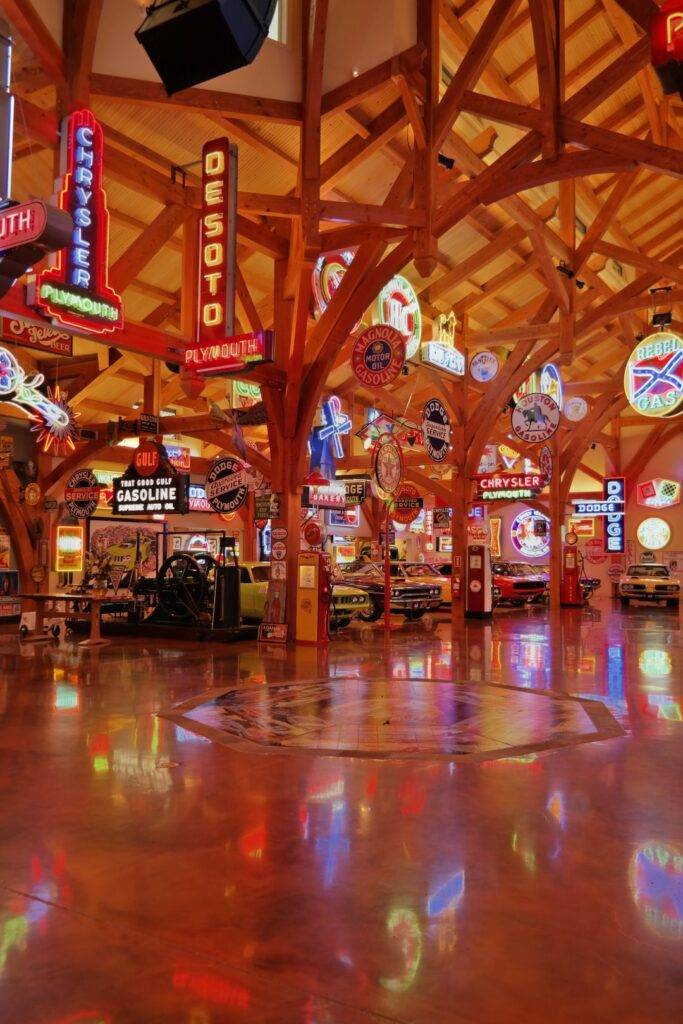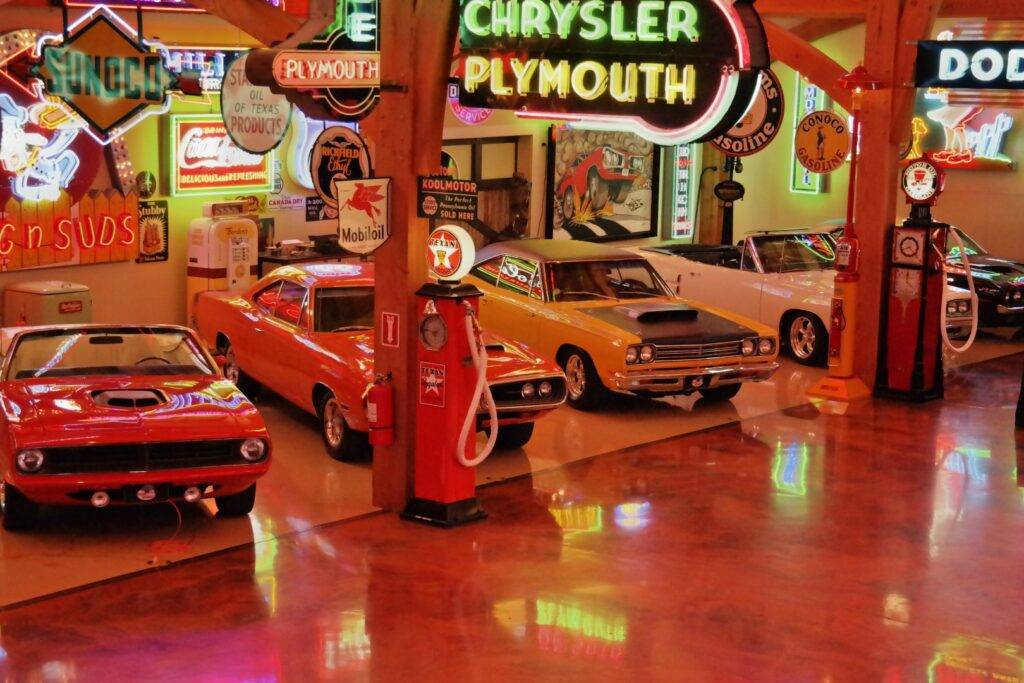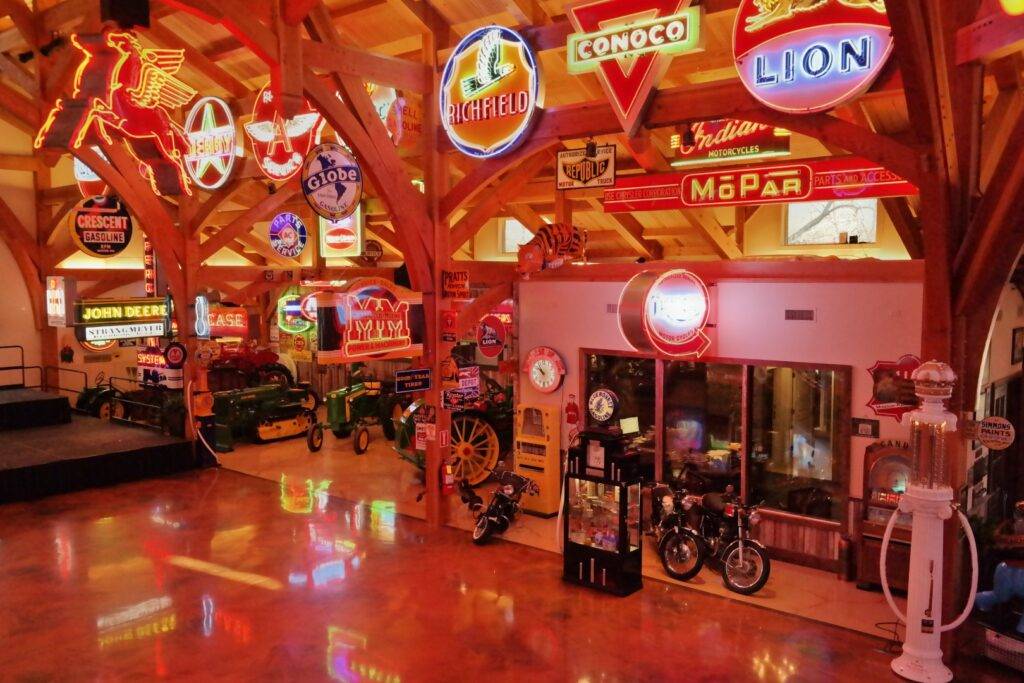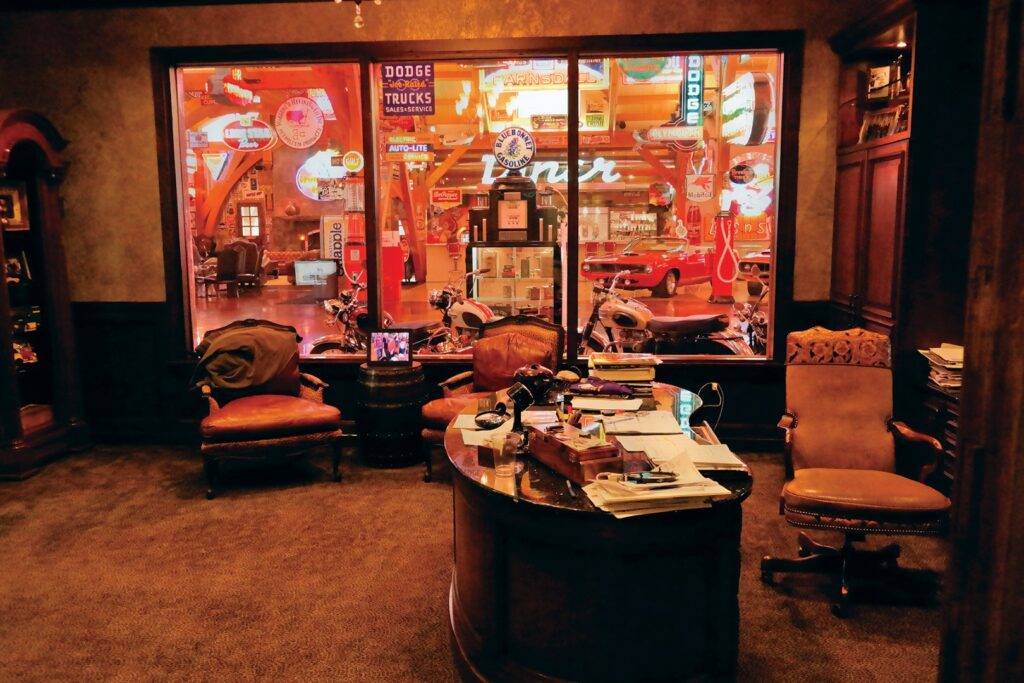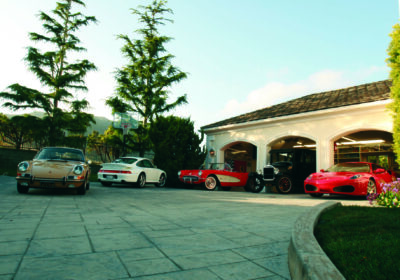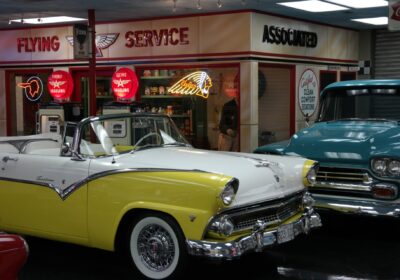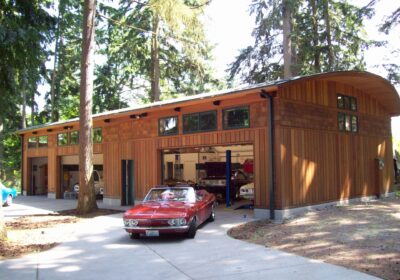Custom-built barn boasts nearly 2,000 neons
Images by John Hovas and the Author
It’s common knowledge that things are done to a larger scale in Texas. It’s just the way it is, and John Hovas sees no reason to change anything about that. This is evidenced by his overwhelming collection of signs, both neons and not, that bedazzle his already stunning garage. Called the Hemi Hideout, the roughly 22,000 square foot, scratch-built structure, known as The Barn to family and friends, lends the feeling of a cathedral more than any garage. It’s long and tall, but not imposing. Elegant with a feeling of down home America might describe it well, but there’s so much more to the understated elegance than meets the eye. In its size there are thousands of subtle design elements that are seen more subconsciously than obviously, but when they’re discovered, it’s remarkable to notice the level of details built into every crevice.
Outside, from a distance, The Barn looks pretty much like that – a massive barn. But, getting closer, weeping willow trees, bar-b-que pavilion with complete food prep and display areas, multi-level ponds connected by little streams and waterfalls, some winding bridges, and a couple of porticos indicate that it’s not the typical barn. Koi swim around lazily in the waters, through exotic and native water plants, around the rocks that are found all over the property, and among frogs and other critters. Boulders of various sizes and weights have been placed in different areas, and some are used as signs. The bridges have a certain perfection to their design, the boards being spaced and sized exactly to one another so there is no deviation even in the bends. The fit and finish of the entire structure isn’t barnlike at all, and inside, you know this place has never seen hay or horse – only horsepower. Lots of it.
“The Barn was designed by me and Bill Seitz, and the awesome design team at Texas Timber Frame of San Antonio, Texas,” said John. “The landscape theme was designed by Don Looney out of Orange County, California and was implemented by Kevin Steed, of McDugald-Steele Landscapers of Houston, Texas and the landscape design continues to evolve.”
Using heavy timber frame construction, the scissor-arched ceilings and elements remind of bygone eras, and Amish-style construction methods and design. An octagonal cupola is the crowning jewel of the project, rising up 54 feet, lending a remarkable finishing touch, and drawing the eye from the sloped side roofs upward to the point. The structure uses mortise and tenon joinery, and all the timber pieces are secured with oak dowels, eliminating the need for bolts, nails, screws, or glue. The majority of the wood is Douglas Fir, and all of it has been sourced from sustainable forests. Remarkably, it’s the largest structure of its kind in all of Texas.
Inside, the wood provides a rustic, warm feeling, but it really doesn’t have a lot of hope – there are simply too many distractions vying for attention. But, the woodwork is art unto itself; dramatic and graceful all at once, contrasting quietly with the neon blazing for immediate gratification. Eventually, though, the wood, the beams, the ceiling on a whole does gain the attention it deserves, and it’s slightly humbling.
“Bill Seitz, Shelly Gates, and Don Looney are tremendous friends, and were all instrumental in bringing together the overall artistic vision of The Barn,” said John. “To the smallest detail, they each contributed substantially to the project, and continue to do so. Diane, my wife of 43 years, has been with me all the way my whole life. I think she is as proud of The Barn as we all are, and I think she enjoys it just as much.”
That said, though, Diane does have a sign between the diner and the living rooms reading, “NO! This is not a museum! Everything is for sale – Contact Diane Hovas.”
Neons are obviously the items battling for attention, and John has enjoyed working with individuals, and running around swap meets and auctions buying various signs and figuring out how and where to hang them in The Barn. He’s purchased a number of Chrysler-related signs to match up with his fleet of nearly 30 MoPar muscle cars from the 1960’s and ’70s. Among the cars is a Moulin Rouge Hemi ‘Cuda convertible and a Panther Pink 440-6 Pack Dodge Challenger, rare cars made even more so thanks to the color. Original drag racing cars and massive Power Wagons bookend the collection, with a few Triumph motorcycles and antique tractors thrown in for good measure.
“Growing up, I was bit by the MoPar Muscle bug,” said John. “My first was a 1970 Dodge Super Bee, it was my pride and joy!”
Along with the Chrysler signs though, he’s had a good time buying unique Road Art, as Mecum Auction Company calls them, vintage signs from oil companies, other car companies, farm implement manufacturers, and signs that seem out of place, but aren’t, just by virtue of being vintage or neon.
“We’ve had a ball going to Mecum auctions,” said John. “They are some of the best people to work with when buying signs and cars.”
One of the most interesting signs he’s acquired is a Dodge dealership neon from the 1930’s still in the original shipping crate. They’ve carefully hung it from the wall and kept it in the crate, and it works beautifully. Interestingly, for the sheer number of signs, roughly 1,200 in all, the interior just borders overwhelming, but everything has been so carefully considered in its placement that there is a flow to the décor no matter from which point you look at it. But make no mistake – each time you enter, you’ll discover something new. At one point, roaming around, photographing the space, new rooms began appearing in areas of the garage completely unseen only two days prior. It’s not totally overwhelming, but it is surprising, and that makes it fun.
“Bill and Shelly really have an eye for detail,” John said. “They take a little time, look over something, and really put serious thought behind colors and design features.”
The Barn is laid out inside in what feels like a cross. In actuality, it’s not, its floor plan is a rectangle, but inside, the way spaces are arranged, it feels like a cross, the cupola smack in the intersection, the porticos off to either side. On one side, John keeps his office where he oversees his businesses and the collections with the help of Shelly Gates and Paula Brunkenhoefer. Directly opposite the office is a full-scale professional kitchen with granite, stainless, and every modern amenity a chef could want, which shares the wall with a 1950’s style diner complete with soda fountain, booths, stools at the counter, vintage soda machine, full scale back bar with shelves, and a center mirror space of quilted-pattern aluminum with a stainless steel MoPar “M.” Adjacent to this is a luxurious, rustic living room – fireplace, big screen, locally-sourced rock and more lumber, and delicate, subtly placed copper detailing. The floors throughout range from wood, and polished and color-treated concrete, depending on where you’re standing, but in the center, under the cupola, is a fantastic Hemi Hideout logo in tile.
“Every time we host a group, it’s fantastic to see everyone’s reactions,” John said. “Our closest friends enjoy touring guests around; they take the time to answer questions, and talk with the people. They really are passionate about making people feel warm and welcome. This really is a lifelong dream come true, and it’s so much fun sharing it and enjoying it. I couldn’t do it without them.”
And share indeed John does. Several times a month, John’s group hosts visits from church groups, senior citizens, students, car clubs, galas, fund raisers, corporate, and private functions. No matter what the occasion, anyone who visits is usually left slack jawed.
“We love to see their expressions when they first come in,” said Bill Sietz, longtime friend of Johns who has helped with The Barn since the beginning. “Sometimes older people will come in and see a sign and remember it from years ago, telling us maybe they had one in their town. It’s a lot of fun.”
Here and there are massive murals depicting cartoon situations in which some of the high-powered MoPars are kicking up dust, or drag racing, or something. Bill was the creator behind each of them. His use of colors and scale is astonishing, and truly helps to bring the barn to life, lending a unique, almost period-correct advertising element to the already visually frenetic space. In spite of their size, they too compete for attention, and when they gain it, it’s more than impressive.
“On their own, they’re pretty big, but it’s funny how when you move something into a space like this, it seems to shrink,” laughed Bill.
If there’s one thing The Barn does well, it’s shrink almost everything. The size of The Barn is one thing, but the multitude of visual elements within just boggles the eye. In a way, it’s inspirational, and for the most part, everything all of us dream about in one space.
“There’s always room for more,” said John.
Indeed, there usually is.
